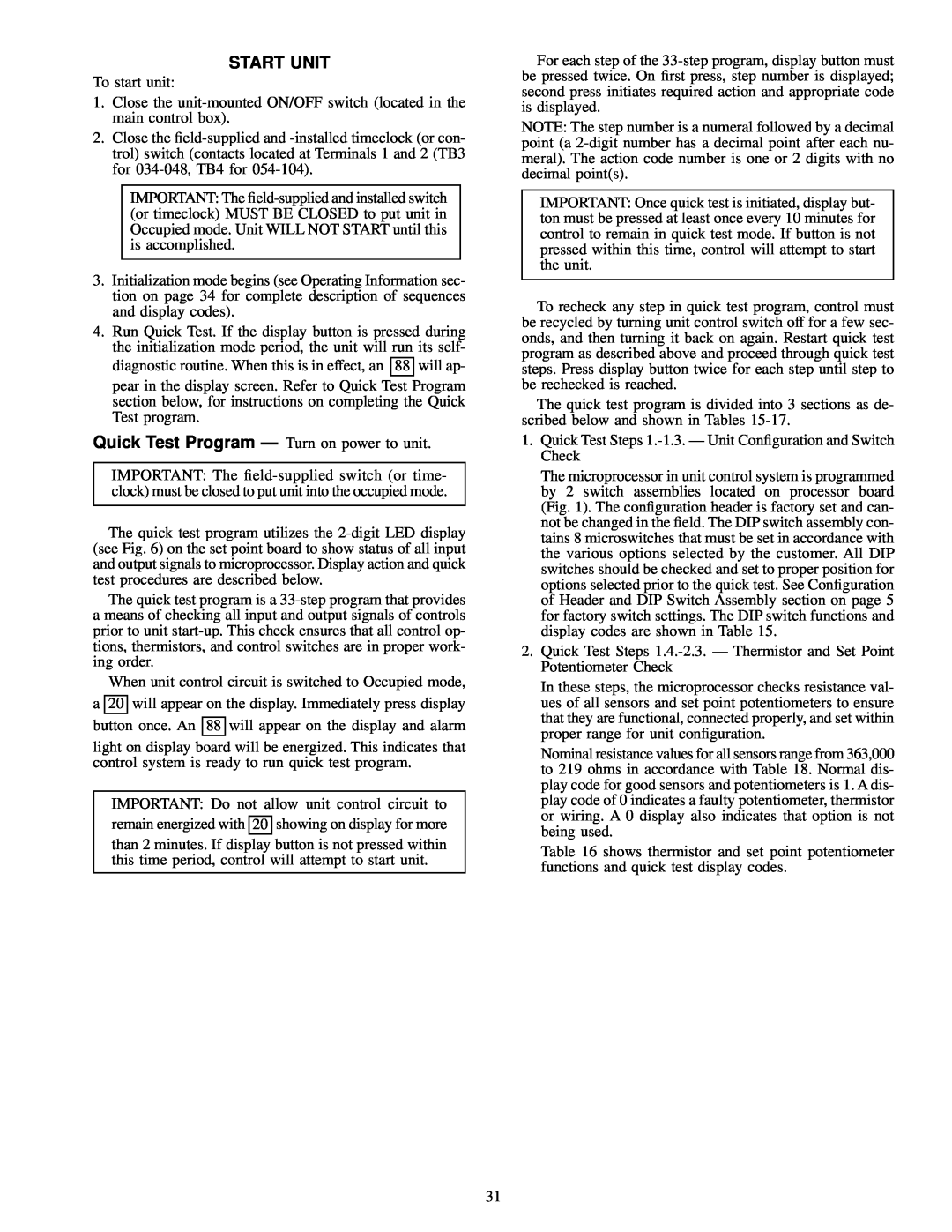
START UNIT
To start unit:
1.Close the
2.Close the
IMPORTANT: The
3.Initialization mode begins (see Operating Information sec- tion on page 34 for complete description of sequences and display codes).
4.Run Quick Test. If the display button is pressed during the initialization mode period, the unit will run its self-
diagnostic routine. When this is in effect, an 88 will ap-
pear in the display screen. Refer to Quick Test Program section below, for instructions on completing the Quick Test program.
Quick Test Program Ð Turn on power to unit.
IMPORTANT: The
The quick test program utilizes the
The quick test program is a
When unit control circuit is switched to Occupied mode,
a20 will appear on the display. Immediately press display button once. An 88 will appear on the display and alarm
light on display board will be energized. This indicates that control system is ready to run quick test program.
IMPORTANT: Do not allow unit control circuit to
remain energized with 20 showing on display for more
than 2 minutes. If display button is not pressed within this time period, control will attempt to start unit.
For each step of the
NOTE: The step number is a numeral followed by a decimal point (a
IMPORTANT: Once quick test is initiated, display but- ton must be pressed at least once every 10 minutes for control to remain in quick test mode. If button is not pressed within this time, control will attempt to start the unit.
To recheck any step in quick test program, control must be recycled by turning unit control switch off for a few sec- onds, and then turning it back on again. Restart quick test program as described above and proceed through quick test steps. Press display button twice for each step until step to be rechecked is reached.
The quick test program is divided into 3 sections as de- scribed below and shown in Tables
1.Quick Test Steps
The microprocessor in unit control system is programmed by 2 switch assemblies located on processor board (Fig. 1). The con®guration header is factory set and can- not be changed in the ®eld. The DIP switch assembly con- tains 8 microswitches that must be set in accordance with the various options selected by the customer. All DIP switches should be checked and set to proper position for options selected prior to the quick test. See Con®guration of Header and DIP Switch Assembly section on page 5 for factory switch settings. The DIP switch functions and display codes are shown in Table 15.
2.Quick Test Steps
In these steps, the microprocessor checks resistance val- ues of all sensors and set point potentiometers to ensure that they are functional, connected properly, and set within proper range for unit con®guration.
Nominal resistance values for all sensors range from 363,000 to 219 ohms in accordance with Table 18. Normal dis- play code for good sensors and potentiometers is 1. A dis- play code of 0 indicates a faulty potentiometer, thermistor or wiring. A 0 display also indicates that option is not being used.
Table 16 shows thermistor and set point potentiometer functions and quick test display codes.
31
